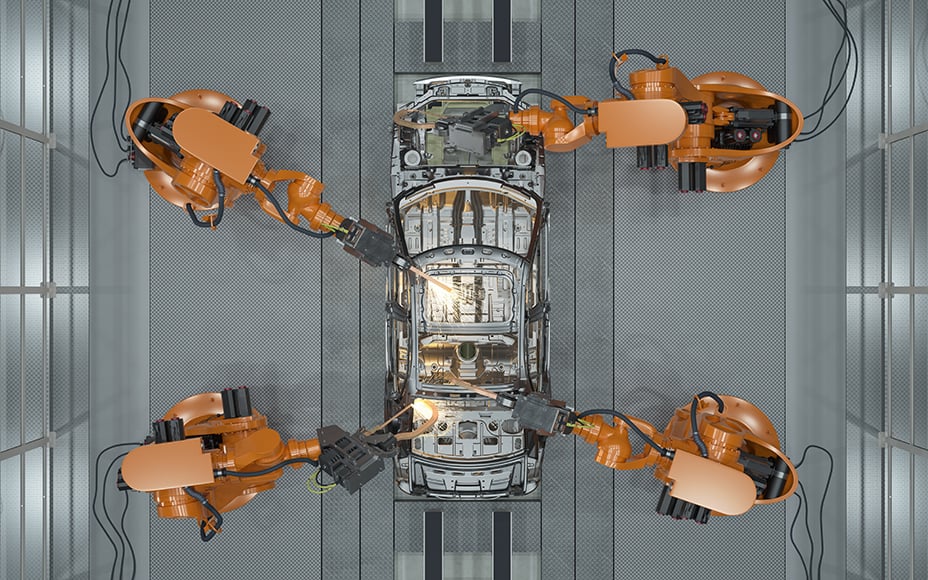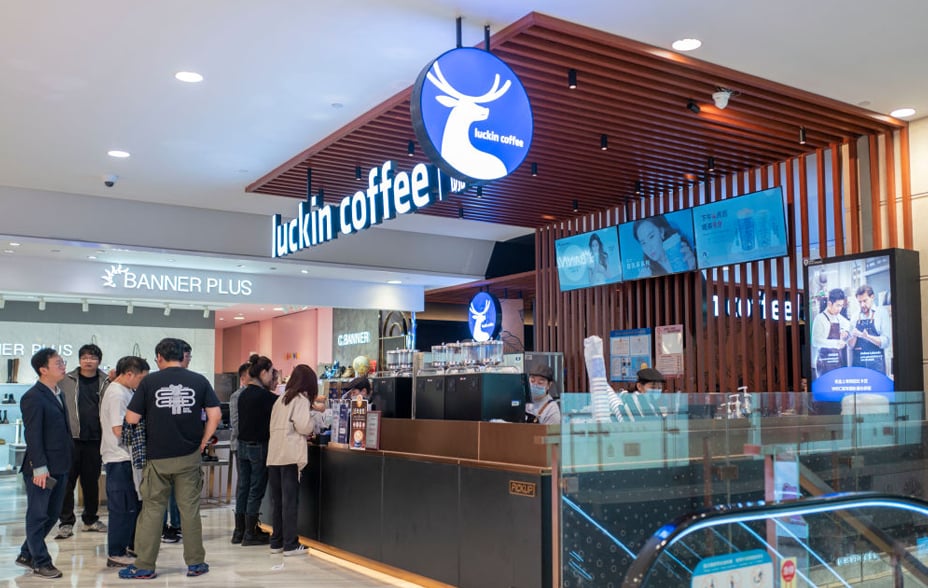Key Points
- When markets are challenging, Monks seeks areas where growth is unaffected – or helped – by tough conditions
- Amid conflict, scarcity, inflation and climate change, disruptive entrepreneurialism continues to present us with opportunities
- From AI to gravel, from biotechnology innovators to streaming companies, there’s plenty to excite us

All investment strategies have the potential for profit and loss, your or your clients’ capital may be at risk.
In our search for outstanding growth companies, we are drawn to areas of innovation and enduring growth: pockets of economic, societal, or technological change that offer fertile conditions for companies to thrive. Our annual Research Agenda outlines the most promising of these areas of opportunity.
During periods of difficult performance, this exercise becomes more important than ever. It helps to ensure we remain reward-seeking in our outlook and focus our research productively.
Some of the areas included look to build on previous work – for instance, assessing how the opportunities in healthcare have evolved amid recent upheaval. Others are more counterintuitive. The challenges arising from a changing geopolitical order, or a shift from abundance to scarcity in a range of key resources, are well covered in the daily market noise. Less obvious are the emerging beneficiaries of these trends. Domestic champions grow stronger; access to scarce resources becomes a powerful competitive advantage.
If equity market returns in the pre-pandemic decade were dominated by ‘technology’ companies, we may be heading into a new era of more diverse winners. As AI diffuses intelligence ever more broadly throughout our economy, we must cast our net wide in the search for businesses possessing the right qualities to harness this paradigm shift. Our Research Agenda helps us focus our time and attention on the crucial task of identifying the companies on the right side of these changes and ensuring our portfolio remains in vigorous long-term health.

Generative AI – the next frontier
We are witnessing the dawn of a major technological revolution. Like previous revolutions, it will precipitate profound social and economic changes. Unlike previous revolutions, the pace of diffusion will surely be rapid.
It is difficult to overstate advancements in artificial intelligence (AI). It was only a year ago that ChatGPT exploded into our collective consciousness, becoming the fastest growing consumer application in history. It’s ludicrously easy to use and embodies more knowledge than any human could. The ability to converse at a human level, combined with extraordinary powers of data processing, has captured the public imagination.
In the 15th century, the Gutenberg printing press took a limited set of letters and symbols and recombined them in unlimited ways to create the modern world. It changed almost every aspect of life: it helped scholars accumulate knowledge, disseminate ideas, standardise language, and increase literacy. In turn that changed the relationship between man and God, individuals and society, and the past and the present.
Generative AI is not a new algorithm. It is a new paradigm.
What might generative AI be able to produce from a recombination of all human knowledge?
Unlike the printing press, which can only copy content, generative AI can create it. It might be used to generate movies on demand, provide tutelage to children, or teach cars to drive themselves. It can do all this without requiring a single new line of code. Generative AI is not a new algorithm. It is a new paradigm. A new way of developing software, by ‘training’ rather than ‘coding.’ This may sound futuristic, but the future is here. Tesla will soon release a new version of its self-driving software. It is end-to-end AI – and it can match human driving performance without anyone coding traffic rules for it.
Software has been an accelerant to growth. It democratised the tools to entrepreneurship and created a new economic model where success of a company scales with its user count. Many of the largest companies today – Microsoft, Apple, Alphabet, Amazon, Meta, Tesla – are all in essence software companies. It’s no wonder that there has been fierce competition for software talent.
Generative AI acts an accelerant to software. Just like it can create new images, music, and videos, so too can it create new software. It democratises programming talent. Already programmers on GitHub, an open-source coding site, use AI-based co-pilots to produce half their code. Tesla’s AI-generated self-driving software replaced over a decade of engineering work and over 300,000 lines of code.
Rather than seeing the end of the software-driven growth era, could we be entering a period of even faster development? What are the new scarce resources? Which companies will capitalise on them? It is clear that we are at the beginning of something big. The pace of progress is far beyond what Moore’s Law dictates, and there is no clear upper bound to what might be possible.
What’s less clear is the impact this might have on companies and societies. Any technology that holds such disruptive potential is bound to cause unease. AI raises difficult questions about the labour force, data privacy, safety, bias, and more. But it is also an engine of progress, and progress powers prosperity. What problems can it solve? Who will be the beneficiaries? And how can we harness this technology to live healthier, safer, and more fulfilling lives? An exploration of these questions will help us identify the winners of tomorrow.
Infrastructure upgrade and the resurgence of the domestic champion
AI captures the imagination. But not all opportunities today are yesterday’s science fiction. Some are familiar, even mundane – but could be equally rewarding.
In last year’s Research Agenda, we highlighted businesses positioned to benefit from the repair and enhancement of physical infrastructure. Developed nations have underinvested for decades. Resilience and longer-term economic growth have suffered. Roads need repaired; bridges rebuilt; power grids upgraded; advanced manufacturing installed. Our conviction that we are witnessing the early stages of an industrial super-cycle across the western world has deepened further.
Two other factors are emerging that will accelerate the trend. Firstly, the pandemic and erupting regional conflict have exposed the vulnerabilities of globally distributed production. This has caused a drive to reinforce domestic supply chains. As geopolitical fractures spread, nations look to their supply of resources – both natural, such as energy and metals, and manufactured, like semiconductors.

Secondly, national security is threatened by something other than rival countries: climate change. It is difficult to underestimate the scale, and the unpredictability, of the implications of a warming world. Risks to physical assets are rising. Billions of dollars need to be spent on everything from the electrical grid to stormwater drainage.
Of course, even without these factors, ongoing investment is needed simply to maintain ageing infrastructure. Some argue that political cycles can stall even essential infrastructure projects. This is an election year after all. However, both geopolitical and climate concerns are issues of national security. Such worries are seldom put off. These trends will be persistent.
Several companies in Monks’ portfolio already benefit from these themes. They include the building materials businesses, Martin Marietta Materials and CRH, ground water management company, Advanced Drainage Systems, power management firm, Eaton, and the mechanical electrical contracting business, Comfort Systems. We expect to find many more opportunities, in the US and abroad.
Capital cycles and emerging scarcity
In the years following the Global Financial Crisis of 2008–09 capital was cheap. Indeed, so inexpensive, and so abundant, that some market participants seemed to forget it had a cost. Starting in 2022, central bank rate moves – in the US, the fastest rate-hiking cycle in 50 years – have provided a rude awakening.
The impact of higher rates in some ways was immediate and obvious. Long duration assets – such as high growth equities – became less valuable. We have certainly felt that. However, in others, the impact has been slower to materialise. Changes to the supply side take time. Yet in the long run the impact of capital scarcity on spending, and therefore competition, should be far more impactful than merely a higher discount rate today.
We have already seen signs of changing competitive dynamics and shifting capital allocation. The US oil and gas sector has entered a period of mega-mergers. Streaming companies – Netflix, Disney, Amazon – have become more restrained in content spending now that such investment has a cost. Tech companies globally are focused on profits, not merely revenue growth*. The margins of some of the Trust’s holdings, such as Shopify and DoorDash, are already benefitting. Moreover, capital may not be as geographically free flowing as it has been. Protectionism is growing, while whole economies are perceived as unsafe homes for capital investment. The UK and China spring to mind.
We are alert to the possibility that 2024 might bring the first flowerings of a more benign supply side. Our research will unearth areas in which rational competition will allow for higher profits, or where sound capital allocators with good balance sheets can take advantage of low valuations. Areas as diverse as telegraph pole manufacturing and British house builders are already on our radar.
Capital is not the only area of emerging scarcity. A key skill of a fund manager is not just to ask questions of companies, but to listen. Our holdings have repeatedly highlighted other areas of shortage to us. Semiconductors have been a headline grabbing example. A new crisis may emerge as a result of the energy transition – is there enough copper, lithium, specialist components (and political will)? Another intriguing bottleneck is labour: both knowledge professionals and blue-collar workers are in short supply. The problem only gets worse. Labour’s share of GDP has seldom been lower, but it is likely to change.
*Revenue growth refers to an increase in the total amount of money brought in by a company’s operations.

Which companies have access to these resources? Which ones can work around the problem? Those able to attract and retain workers – through compensation, mission, or a loyal workforce or who have a process that requires less labour – will have a burgeoning competitive advantage. We are looking for scaled players rolling up fragmented industries, robotics and automation companies, and, of course, AI leaders.
Capital and labour shortages may spell trouble for many. But for some, it will be a huge benefit. These big winners should be very profitable investments. We intend to find them.
Healthcare – a year of healing
We are drawn to areas of structural growth that are temporarily, and unfairly, out of favour.
In 2023 healthcare companies underperformed the wider global market by 20 per cent. This reset was the worst result in 20 years. A decade’s worth of cumulative outperformance by the sector was wiped out. Relative valuation measures are close to 10-year lows. So, healthcare is out of favour – but is it unfairly so?
The long-term drivers of demand growth are intact. Firstly, the population continues to age. The World Health Organization (WHO) forecasts that the global number of people aged over 60 will double by 2050. The number of people over 80 will triple. As we age, we consume much more healthcare. A 90-year-old Brit incurs approximately 10 times the healthcare costs of someone half their age.
The number of FDA-approved drugs last year… was the second highest in a generation.
Secondly, we are rapidly expanding the boundaries of medicine. More areas are being ‘medicalised’ and previously incurable diseases are becoming controlled with long-term therapies.
Third, biological innovation has accelerated. The number of Food and Drug Administration (FDA)-approved drugs last year – a leading indicator of future industry revenue growth – was the second highest in a generation.
If demand growth is so obvious, what’s the problem? Several waves of fear have built up to create a near-perfect storm. The list below is not exhaustive. However, a common and intriguing thread is that each headwind is lessening.
- Waiting lists lengthened as procedures were postponed. Revenue from expected interventions never materialised. Non-urgent medical procedures, such as hip replacements, were crowded out by the pandemic, staff shortages, and then supply chain delays. The waiting list for elective treatments in England is almost three times larger than a decade ago. However, we will now need many years of above-average activity to clear the backlog – heralding a golden period of demand for medical device makers.
- Similar disruptions caused inventories to be overbuilt for bioprocessing and life science products. The excess is being run down, temporarily depressing demand and near-term growth rates. We expect a return to more normal conditions in the west. In the east, a central clamp-down on purchasing saw life science and medical device demand fall very sharply. Normalisation will mean growth.
- Falling risk tolerances resulted in companies requiring equity funding to significantly trim their ambitions and conserve cash. Pre-revenue biotech was hit hardest. Yet even the largest and most profitable pharmaceutical companies struggled as the Inflation Reduction Act raised fears of significant US drug pricing pressure. The funding environment now looks like it may ease, and worst-case pricing scenarios have not materialised.
- Finally, a broad swathe of medical companies (and consumer goods businesses, like those selling chocolate and alcohol) found share prices under pressure as the efficacy of a new class of anti-obesity medicines become a market focus. We believe in the strong commercial potential for these drugs – but their long-term existential impact on demand for adjacent areas appears greatly overdone.
Our initial contentions are that structural demand drivers remain in place, valuations are strongly supportive, and several waves of fear are beginning to subside. Opportunities should be bountiful.
Conclusion
The world is beset with challenges. Conflict, scarcity, inflation, climate change. And yet, innovation and entrepreneurship are as alive today as they have ever been. The opportunity set before us is broad and deep. From AI to gravel, from biotechnology innovators to streaming companies – it’s a time to be excited. We look forward to a year of fruitful research.

Important information and risk factors
Annual past performance to 31 December each year (net%)
| 2019 | 2020 | 2021 | 2022 | 2023 | |
| Monks Investment Trust | 32.3 | 42.1 | 1.2 | -31.0 | 12.6 |
| FTSE World Index | 22.8 | 12.7 | 22.1 | -7.2 | 17.2 |
Source: Morningstar, FTSE, total return in sterling.
Past performance is not a guide to future returns.
Legal notice
Source: London Stock Exchange Group plc and its group undertakings (collectively, the ‘LSE Group’). © LSE Group 2024. FTSE Russell is a trading name of certain of the LSE Group companies. ‘FTSE®’ ‘Russell®’, is/are a trade mark(s) of the relevant LSE Group companies and is/are used by any other LSE Group company under license. All rights in the FTSE Russell indexes or data vest in the relevant LSE Group company which owns the index or the data. Neither LSE Group nor its licensors accept any liability for any errors or omissions in the indexes or data and no party may rely on any indexes or data contained in this communication. No further distribution of data from the LSE Group is permitted without the relevant LSE Group company’s express written consent. The LSE Group does not promote, sponsor or endorse the content of this communication.
Important information
This communication was produced and approved in February 2024 and has not been updated subsequently. It represents views held at the time of writing and may not reflect current thinking.
This communication contains information on investments which does not constitute independent research. Accordingly, it is not subject to the protections afforded to independent research may have dealt in the investments concerned. All information is sourced from Baillie Gifford & Co and is current unless otherwise stated. The images used in this communication are for illustrative purposes only.
Baillie Gifford & Co Limited is wholly owned by Baillie Gifford & Co. Both companies are authorised and regulated by the Financial Conduct Authority and are based at: Calton Square, 1 Greenside Row, Edinburgh EH1 3AN. The investment trusts managed by Baillie Gifford & Co Limited are listed on the London Stock Exchange and are not authorised or regulated by the Financial Conduct Authority.
A Key Information Document is available by visiting bailliegifford.com
The views expressed should not be considered as advice or a recommendation to buy, sell or hold a particular investment. They reflect opinion and should not be taken as statements of fact nor should any reliance be placed on them when making investment decisions.
Investments with exposure to overseas securities can be affected by changing stock market conditions and currency exchange rates.
93007 10045560




